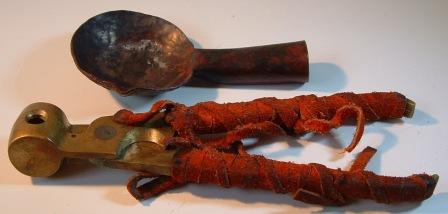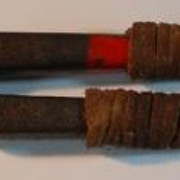Johnny Tremain
Silversmith in training
aluminum or steel ball mold, which is best and why??
This is a loaded question. I have steel, brass, and aluminum molds. Mostly for black powder cartridge shooting.
As far as the flinter goes. I have one Lee 45 cal round ball mold. I think I bought it new in the 90s, and fill 10 Pepsi bottle (biggins) every few years. My cheap neighbor only had one 45 cal, so he uses mine every now and again.
I see no need for anything else for round ball.







